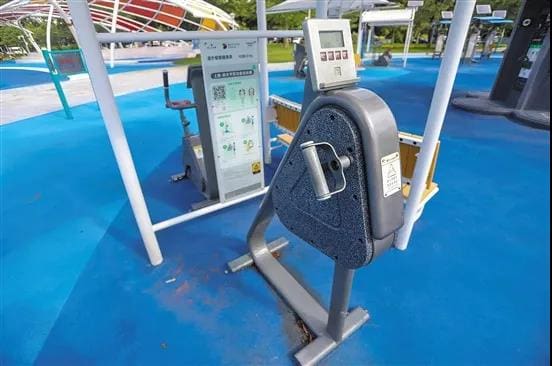Sports
8 Must-Have Features of Wearable Fitness Trackers for Optimized Health


In today’s fast-paced world, staying on top of our health and fitness goals has become increasingly important.
Wearable fitness trackers have become essential tools in helping individuals achieve their optimal health.
With advancements in technology, these devices are now equipped with a range of features designed to provide comprehensive insights into our daily activities and overall well-being.
From heart rate tracking to personalized coaching, the latest wearable fitness trackers offer a multitude of features that can revolutionize the way we approach our health.
Key Takeaways
- Heart rate tracking provides real-time data on cardiovascular health and fitness levels, allowing for adjustments in exercise intensity for optimal results and early detection of potential health issues.
- Sleep analysis offers insights into sleep patterns and quality, identifying disturbances and providing personalized recommendations for better sleep to improve physical and mental well-being.
- Activity tracking, including step counting and calorie burn monitoring, helps users track progress, adjust fitness routines, and understand the relationship between activity levels and energy expenditure.
- Personalized guidance through coaching and goal setting empowers individuals in their fitness journey, providing tailored recommendations, real-time feedback, and progress tracking for accountability and success.
Heart Rate Tracking
Heart rate tracking is a fundamental feature of wearable fitness trackers, providing users with real-time data to monitor and optimize their cardiovascular health and fitness levels. By continuously monitoring heart rate, these devices offer valuable insights into the intensity of physical activity and overall exertion levels. This information empowers users to tailor their workouts for maximum efficiency and safety, ensuring that they reach their fitness goals while minimizing the risk of overexertion or injury.


Moreover, wearable fitness trackers with heart rate monitoring capabilities allow users to gauge their cardiovascular health over time. By tracking resting heart rate and heart rate variability, individuals can gain a deeper understanding of their overall heart health and endurance. This data can also serve as an early indicator of potential health issues, prompting users to seek medical advice if irregularities are detected.
In addition, the real-time nature of heart rate tracking enables users to make immediate adjustments to their exercise intensity, ensuring that they remain within their target heart rate zones for optimal calorie burn, endurance improvement, and cardiovascular conditioning. This feature is particularly beneficial for individuals seeking freedom in their fitness routines, as it allows for dynamic and personalized workout experiences.
Sleep Analysis
Continuously monitoring vital signs, such as sleep patterns, is another critical aspect of wearable fitness trackers, providing users with comprehensive insights into their overall health and well-being.
Sleep analysis features in wearable fitness trackers have evolved to offer advanced capabilities, including the ability to track different sleep stages such as light, deep, and REM sleep. This level of insight allows users to understand the quality of their sleep, identify any disturbances or interruptions, and make informed adjustments to improve their sleep patterns.
Moreover, wearable fitness trackers with sleep analysis can also provide personalized recommendations for better sleep based on the user’s sleep data. By analyzing sleep patterns over time, these devices can offer guidance on establishing a consistent sleep schedule, improving sleep hygiene, and making lifestyle changes that positively impact sleep quality.
![]()
![]()
The integration of sleep analysis into wearable fitness trackers not only enhances the user’s understanding of their overall health but also empowers them to take proactive steps towards optimizing their sleep, which is fundamental to their physical and mental well-being.
Step Counting
One of the fundamental features of wearable fitness trackers is their ability to accurately monitor and record the number of steps taken by the user throughout the day, providing valuable insights into their physical activity levels.
- Accuracy: Advanced sensors and algorithms enable precise step counting, ensuring that users can rely on the data for informed decision-making.
- Accelerometer Technology: Utilizes sophisticated motion sensors to detect and measure each step, minimizing the margin of error.
- Real-Time Tracking: Offers users the ability to monitor their step count in real time, fostering awareness and motivation to achieve daily activity goals.
- Long-Term Analysis: Stores historical step data, allowing users to track their progress over time and adjust their fitness routines as needed.
Accurate step counting is essential for individuals who desire the freedom to monitor and improve their physical activity levels effectively. With this feature, users can gain insights into their daily movement patterns and make informed decisions to optimize their overall health and well-being.
Calorie Burn Monitoring
Regular monitoring of calorie burn is an integral aspect of utilizing wearable fitness trackers to optimize one’s physical activity and overall health. By tracking the number of calories burned throughout the day, individuals can gain valuable insights into their energy expenditure and make informed decisions about their diet and exercise routines.
Advanced wearable fitness trackers use sensors such as accelerometers and heart rate monitors to accurately estimate calorie burn based on factors like age, weight, height, and activity level. These devices provide real-time data, allowing users to adjust their activities to meet specific calorie-burning goals. Additionally, some trackers offer personalized feedback and suggestions to help users maintain an optimal calorie burn rate.


Effective calorie burn monitoring can help individuals better understand the relationship between their activity levels and energy expenditure, leading to more efficient workouts and improved overall fitness. It also provides a comprehensive view of daily physical activity, encouraging users to make healthier lifestyle choices.
With the availability of detailed calorie burn data, individuals are empowered to tailor their fitness and nutrition strategies to achieve their health and wellness objectives. Therefore, when choosing a wearable fitness tracker, it’s essential to prioritize accurate calorie burn monitoring for a holistic approach to health optimization.
Personalized Coaching
Monitoring calorie burn provides valuable data that can be leveraged to personalize coaching and optimize health and fitness outcomes. Wearable fitness trackers can use this data to offer personalized coaching, making them an essential tool for individuals seeking freedom in their fitness journey.
Here are three key ways personalized coaching can be optimized through wearable fitness trackers:
- Tailored Activity Recommendations: Wearable fitness trackers can analyze calorie burn data to provide personalized activity recommendations, taking into account an individual’s fitness level, goals, and daily routine. This personalized approach empowers users to engage in activities that align with their unique needs and preferences.
- Real-Time Feedback and Encouragement: By monitoring calorie burn in real-time, wearable fitness trackers can offer immediate feedback and encouragement during workouts. This real-time coaching helps individuals make instant adjustments to their exercise intensity, duration, or technique, maximizing the effectiveness of their workouts.
- Long-Term Progress Tracking: Wearable fitness trackers store historical calorie burn data, enabling the provision of long-term progress tracking and personalized goal setting. This feature allows individuals to track their fitness journey over time and adjust their goals based on their evolving needs and achievements.
Goal Setting
Wearable fitness trackers provide a comprehensive framework for effective goal setting, enabling individuals to strategically plan and track their fitness objectives with precision and accountability. These devices allow users to set specific, measurable, achievable, relevant, and time-bound (SMART) goals, which are crucial for success in any fitness endeavor. By inputting personal data such as age, weight, and activity level, users can receive tailored recommendations for daily step counts, calorie intake, and exercise duration to help them reach their fitness targets.


Moreover, wearable fitness trackers offer progress tracking features that enable users to monitor their advancements towards their goals. This real-time feedback motivates individuals to stay committed to their fitness routines and make necessary adjustments to optimize their performance. Additionally, many devices provide reminders and notifications to encourage users to stay on track, further promoting adherence to their fitness goals.
Progress Tracking
Progress tracking is essential for optimizing health outcomes through wearable fitness trackers.
By utilizing data visualization, individuals can easily track their progress and identify areas for improvement.
This method complements goal setting by providing tangible evidence of achievements and motivating further advancements.
Data Visualization
Utilizing advanced data visualization techniques, wearable fitness trackers offer users a comprehensive and visually engaging means of tracking their health and fitness progress. This feature provides valuable insights into various aspects of one’s health journey, empowering individuals to make informed decisions.


The data visualization capabilities of these trackers include:
- Graphical Representation: Users can easily interpret their activity levels, sleep patterns, and heart rate through intuitive graphs and charts.
- Goal Tracking: Visualizing progress towards predefined fitness goals motivates users to stay on track and achieve better results.
- Trend Analysis: By displaying trends over time, users can identify patterns and make adjustments to their lifestyle for improved health outcomes.
This visual representation of data not only enhances user experience but also facilitates a deeper understanding of personal health metrics.
Goal Setting
The insightful data visualization capabilities of wearable fitness trackers seamlessly lead users into the realm of goal setting, providing a comprehensive platform for tracking progress towards predefined fitness milestones.
Setting specific, achievable goals is essential for maintaining motivation and making tangible progress. Wearable fitness trackers allow users to set personalized goals for steps taken, calories burned, distance covered, and even sleep patterns.
These devices provide real-time feedback on progress, empowering users to make informed decisions about their health and fitness. By tracking progress towards these goals, individuals can adjust their routines, celebrate milestones, and stay motivated to achieve optimal health.


The ability to set and monitor progress towards personal fitness goals offers users the freedom to tailor their fitness journey to their unique needs and aspirations.
Water Resistance
Ensuring water resistance in wearable fitness trackers is essential for maintaining their functionality and accuracy during activities such as swimming, intense workouts, or exposure to the elements. When choosing a fitness tracker with water resistance, consider the following features:
- Depth Rating: Look for a fitness tracker with a water resistance depth rating suitable for your intended activities. For example, swimmers may need a higher depth rating compared to those who engage in water-based aerobics.
- Swim Tracking: Opt for a tracker that offers specific swim tracking features such as lap counting, stroke recognition, and swim stroke style identification for a comprehensive swimming experience.
- Durability: Seek a tracker with robust water resistance to endure exposure to sweat, rain, or accidental splashes without compromising its functionality.
Frequently Asked Questions
Are There Any Privacy Concerns With Wearable Fitness Trackers and How Can Users Protect Their Personal Data?
Privacy concerns with wearable fitness trackers include data security and potential misuse. Users can protect their data by researching device security measures, using strong passwords, and regularly updating software. Additionally, being mindful of sharing sensitive information and adjusting privacy settings is crucial.
Can Wearable Fitness Trackers Accurately Track Activities Like Weightlifting or Yoga, or Are They Mainly Designed for Cardio Exercises?
While wearable fitness trackers excel at monitoring cardio exercises, their accuracy in tracking weightlifting or yoga varies. Some advanced models utilize sensors to detect resistance training and yoga poses, but their precision may not match that of cardio activities.
How Do Wearable Fitness Trackers Handle Tracking Activities Like Swimming or Other Water-Based Exercises?
Wearable fitness trackers use advanced sensors to track swimming and other water-based exercises. They incorporate waterproof designs and specialized algorithms to accurately capture data such as lap count, stroke type, and duration, providing comprehensive insights for aquatic activities.


Do Wearable Fitness Trackers Have the Capability to Sync With Other Fitness Apps or Devices for a More Comprehensive Health Overview?
Wearable fitness trackers often sync with other apps and devices for a comprehensive health overview. For instance, Fitbit devices integrate with various health and fitness apps, providing users with a holistic view of their well-being.
Can Wearable Fitness Trackers Provide Insights Into Overall Stress Levels or Mental Wellness in Addition to Physical Health Tracking?
Wearable fitness trackers can provide insights into overall stress levels and mental wellness, in addition to physical health tracking. Features like heart rate variability monitoring and stress tracking can offer valuable data for users to better understand and manage their mental well-being.


Hi, I’m Kyle Rivera, a news journalist and blog editor with the Daily Evening News. A TCU alum with a flair for storytelling, I spend my days uncovering impactful stories and my evenings exploring the realms of yoga, cycling, and whimsically bad poetry.
Travel is my escape; I’ve trekked from Tokyo’s neon lights to Iceland’s tranquil vistas. But no journey is complete without Mogli, my Golden Retriever, who’s redefining his breed standards in the most charming ways.
I love connecting with fellow travelers, yogis, cyclists, and anyone who enjoys a laugh at my poetic attempts. If you’re into stories that inspire, travel escapades, or just want to see what Mogli and I are up to, I’d love to hear from you on Instagram or Facebook. Let’s share tales and tips from around the globe!

